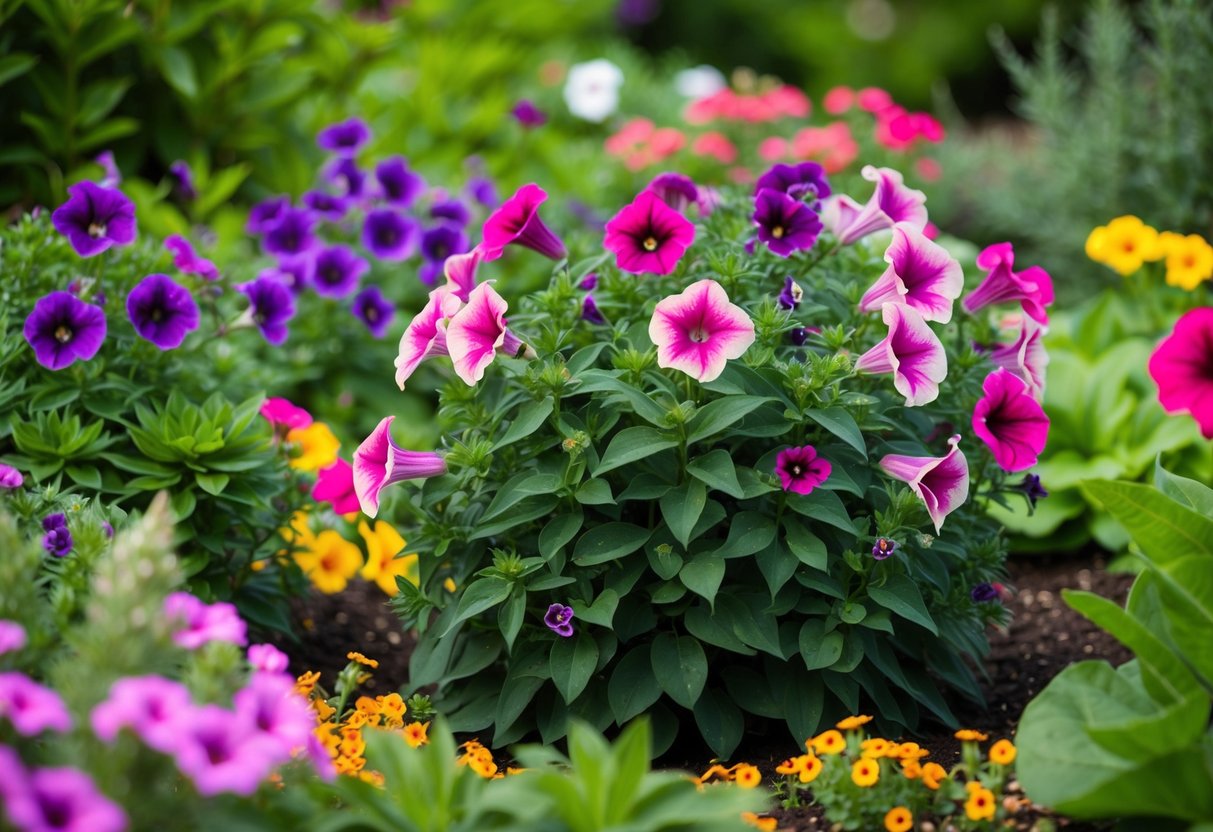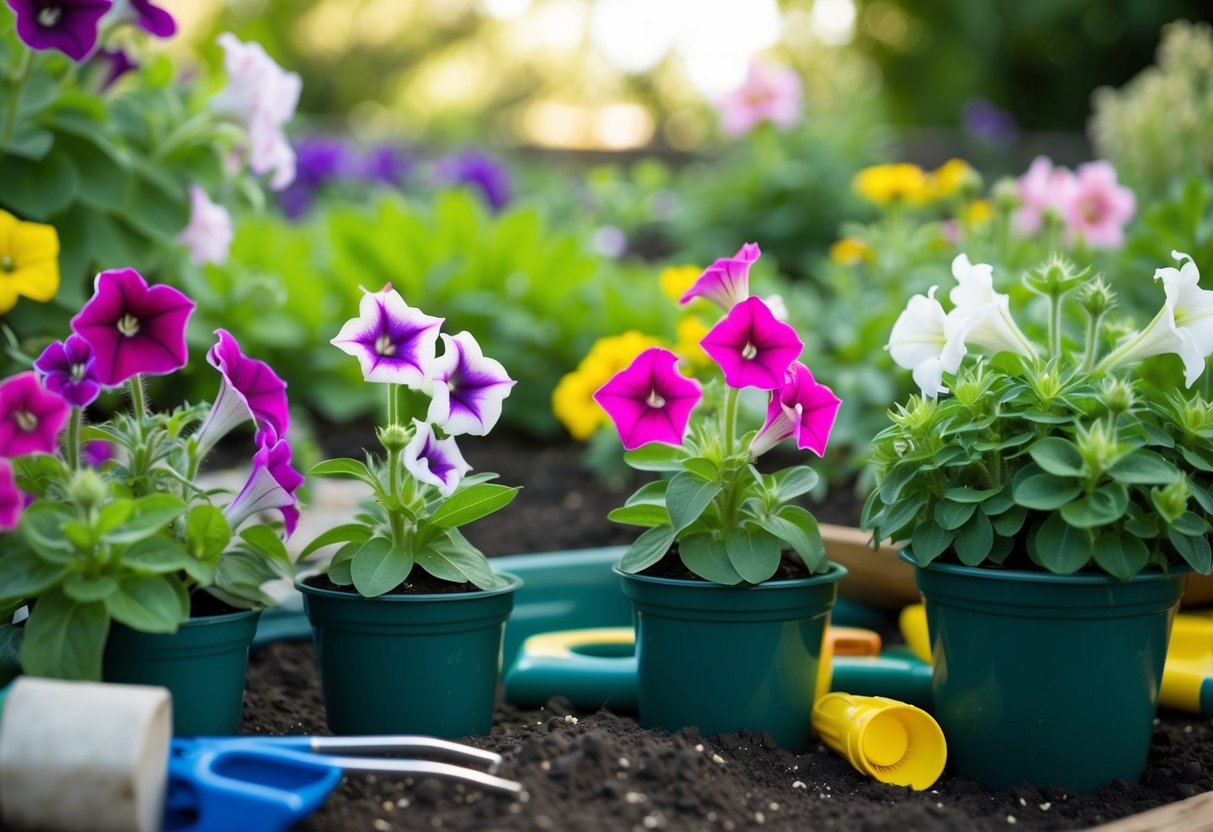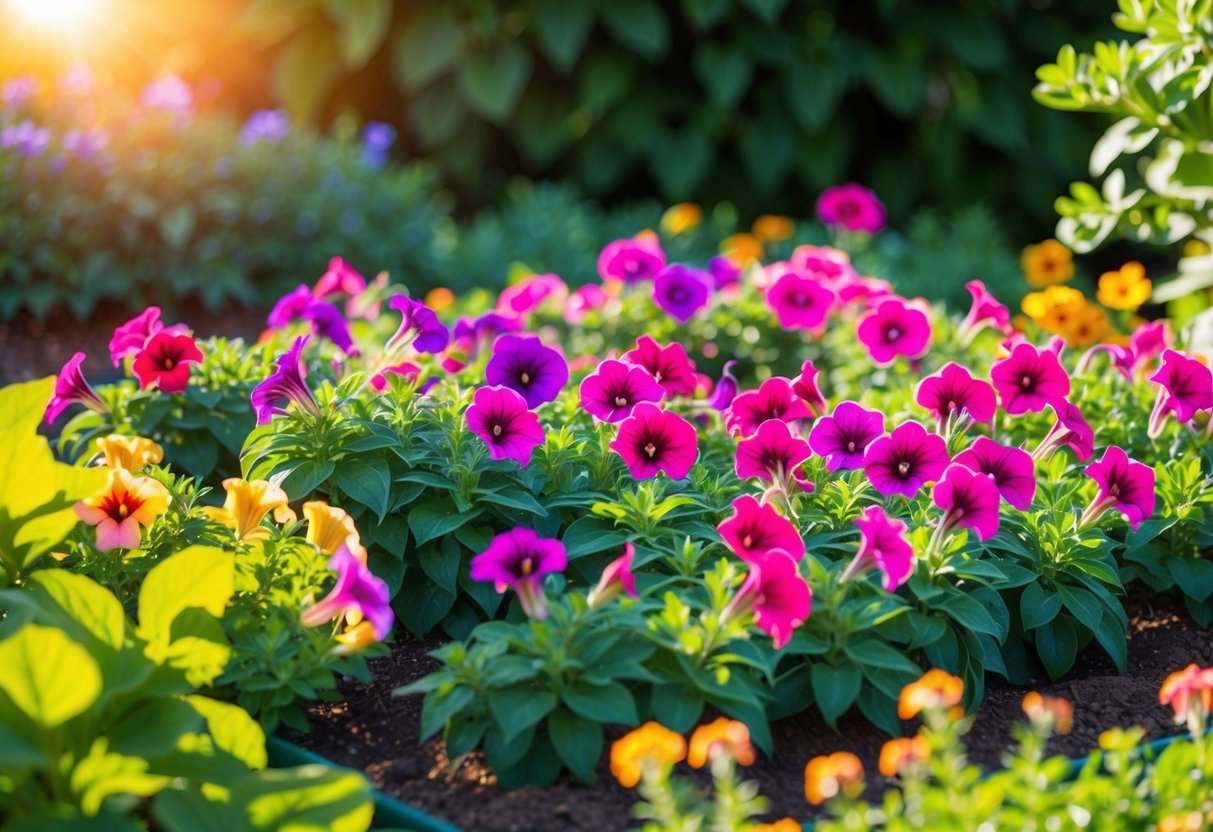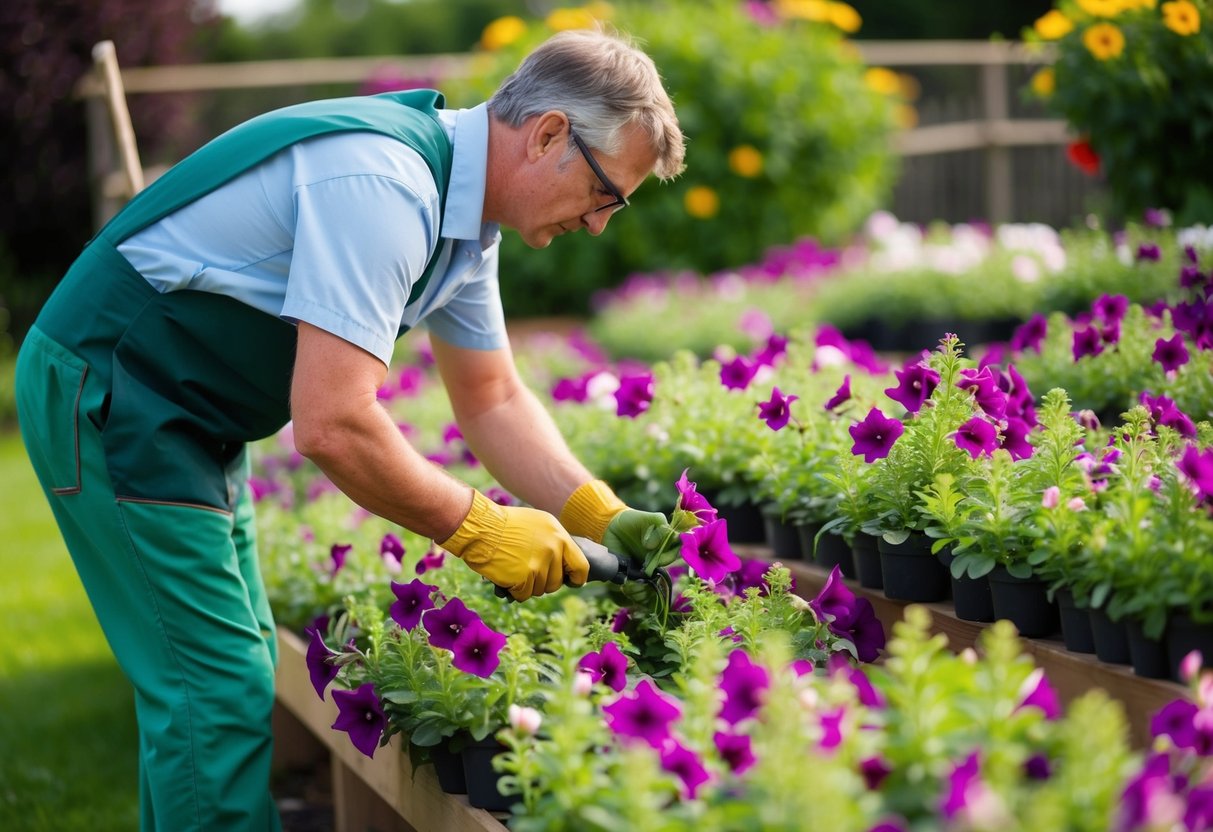Are Petunias a Perennial or Annual? Understanding Their Growth Cycle
If you’re diving into gardening or simply love adding a splash of color to your outdoor space, you might be wondering about petunias. These stunning flowers bring life to gardens, hanging baskets, and window boxes.
Petunias are typically grown as annuals but are actually tender perennials in warmer climates. This means they can last beyond a single season in areas without frost.

In colder climates, petunias are replanted yearly because they cannot withstand freezing temperatures. Nevertheless, these vibrant blooms make the effort worthwhile with their long-lasting and diverse colors.
In US hardiness zones 9-11, petunias thrive as perennials, rewarding you with their beauty year after year.
Exploring whether to grow them as annuals or perennials also depends on your personal preference and environment. By understanding how these flowers behave in different zones, you can plan your garden accordingly and enjoy their vivid blossoms throughout the growing season.
What Are Petunias?

Petunias are popular flowering plants known for their bright colors and adaptable growth. They add beauty to gardens and come in different sizes and types, each with unique features.
Botanical Profile
Petunias belong to the Solanaceae family and have the botanical name Petunia spp. They are tender perennials in Zones 9 to 11, but often grown as annuals elsewhere due to frost sensitivity.
The plant’s funnel-shaped flowers bloom from spring until frost. Petunias are bushy and can spread up to 3 feet wide, depending on the variety. You’ll often see them in borders, containers, or hanging baskets, attracting hummingbirds and butterflies to your garden.
Varieties of Petunias
Petunias come in several varieties, each offering different flower sizes and growth patterns. Grandiflora petunias, for example, have large, 5-inch blooms and are perfect for showy displays.
Multiflora petunias bloom in abundance with medium-sized, 2-inch flowers and are suitable for windy areas. Meanwhile, Milliflora petunias produce numerous tiny flowers about 1 inch across and are compact, making them ideal for pots.
Floribunda petunias are a mix between grandiflora and multiflora, featuring flowers about 3 inches wide. Lastly, Wave petunias and supertunia are trailing varieties, excellent for ground cover or hanging baskets due to their spreading habit.
Categorizing Petunias: Annual or Perennial

Petunias can either be classified as annuals or perennials, depending on specific growing conditions. Understanding these factors can help you decide how to grow petunias in your garden.
Life Span Explained
Petunias often grow as annual flowers in colder areas. They thrive during the warm season and die when winter frost arrives. In such climates, you will need to replant them each spring. This means that they are best enjoyed for just one season.
In warmer areas, petunias can act as perennial flowers. Here, they can survive mild winters, allowing them to bloom year after year. When cared for properly, they can provide colorful blooms for longer periods without needing to be replanted each spring.
Tender Perennials in Different Zones
Petunias are classified as tender perennials. This means they can act as perennials in the right conditions but are more often considered annuals. The main deciding factor here is the hardiness zone where you reside.
In the United States, petunias can survive year-round in hardiness zones 9 to 11, where winters are frost-free.
These zones offer milder winters and temperatures rarely drop low enough to harm the plants. In zones with harsher winters, you might treat petunias as annuals. If you want them to last, ensure you plant them in frost-free locations where temperatures don’t get too low. This way, you can enjoy petunias as long-lasting garden beauties.
How to Grow Petunias

Planting petunias involves choosing the right spot and providing the right conditions. These vibrant flowers need plenty of sunlight, proper watering, and good soil to thrive.
Ideal Growing Conditions
Petunias flourish in full sunlight and require at least six hours of direct sun each day. It’s essential to plant them in locations that get plenty of light. In shadier spots, you might notice fewer blooms or leggy stems.
Use well-draining soil to prevent water from pooling around the roots, which can cause rot. A mixture of good quality potting soil, peat, and compost works well. These flowers prefer slightly acidic to neutral pH levels in the soil.
Steps for Planting Petunias
Start by planting after the last spring frost date to avoid damage from unexpected cold. When planting petunias, dig a hole slightly larger than the root ball and place the plant in it. Cover the roots with soil and gently press down to remove air pockets.
Space them about 12 inches apart to allow room for growth. If you’re growing them in containers, ensure there’s drainage to avoid waterlogging.
Water the newly planted flowers thoroughly to help establish the roots in their new location.
Maintaining Healthy Growth
Regular watering is crucial, but avoid overwatering. Aim for about 1 to 2 inches weekly, making sure the soil stays moist without getting soggy. Petunias in pots might need more frequent watering due to quicker drying out.
Feed your plants with a balanced fertilizer every 2-3 weeks. This promotes vibrant blooms throughout the growing season.
Deadhead spent flowers to encourage new blooms, and trim any leggy stems to maintain a nice shape.
To keep them over winter, you might consider bringing potted plants indoors or using mulch to insulate outdoor ones, depending on your climate. Overwintering petunias requires some extra care but can extend their life beyond a single season.
Designing with Petunias

Petunias are versatile and offer a burst of color in any garden setting. Use them creatively in containers or incorporate them into flower gardens for beautiful displays.
Creative Container Ideas
Choose hanging baskets to showcase trailing petunias, accentuating their long, flowing vines. These create stunning cascades of color. For more visual interest, mix petunias with other flowers in your baskets.
Use window boxes for a charming touch. Grandiflora petunias, with their large blooms, add a bold splash of color and can handle these settings well. Combine them with smaller plants to highlight their size.
Smooth petals help prevent damage in windy areas, keeping your display looking fresh.
Consider experimenting with different container shapes and sizes to enhance the aesthetic appeal. Each shape provides a unique way to showcase the beauty of petunias.
Incorporating into Flower Gardens
Petunias are wonderful choices for brightening up flower gardens. You can plant them in masses for a vibrant carpet of color or scatter them throughout a garden bed for a more natural look.
Multiflora petunias work well in mixed borders because of their smaller but numerous blooms.
Plant them alongside perennials for a mix of seasonal and year-round beauty. This combination can provide stunning contrasts in both color and texture.
To make sure your garden looks cohesive, coordinate colors by choosing a palette that complements the other plants. Petunias are available in a wide range of hues, letting you customize your garden beautifully.
Ongoing Petunia Care

Caring for petunias involves regular maintenance to keep them blooming and healthy. Key practices include deadheading to encourage more blooms, ensuring consistent watering and feeding, and managing any pest or disease issues that may arise.
Deadheading for Reblooming
Deadheading is essential for petunias to rebloom and keep their vibrant appearance. Remove faded or dead flowers by pinching them off between your fingers. This process prevents the plant from using energy to produce seeds and instead encourages more blooms.
When doing this regularly, you’ll notice that the plant directs its energy toward creating new flowers, keeping your garden colorful.
If you’re caring for trailing varieties, paying special attention to removing spent blooms ensures that they maintain a neat and tidy appearance and don’t become leggy or straggly.
Watering and Fertilizing
Regular watering is crucial for petunias, but be careful not to overwater them. Ensure that the soil has good drainage, as soggy soil can lead to root rot.
Generally, you should water when the top inch of soil feels dry to the touch. In hotter climates or during dry spells, you may need to water more frequently.
Fertilizing your petunias every two weeks with a balanced, water-soluble fertilizer helps maintain strong growth and colorful blooms. This keeps the plant nourished and supports its flowering cycles. For spreading petunias, adequate feeding is especially important for them to reach their full potential.
Managing Pests and Diseases
Pests like aphids and slugs can affect petunias. To manage these, you should inspect your plants regularly.
A gentle spray of water can dislodge aphids. For slugs, you can hand-pick them or use slug traps. Make sure to check the undersides of leaves, where pests often hide.
Diseases such as powdery mildew can also affect petunias. This happens when the plants are too crowded or have poor air circulation.
To prevent these problems, regularly check for signs of disease and ensure plants have space. If you notice any signs, use fungicides sparingly. Make sure to follow instructions to minimize harm to the plant and the environment.







